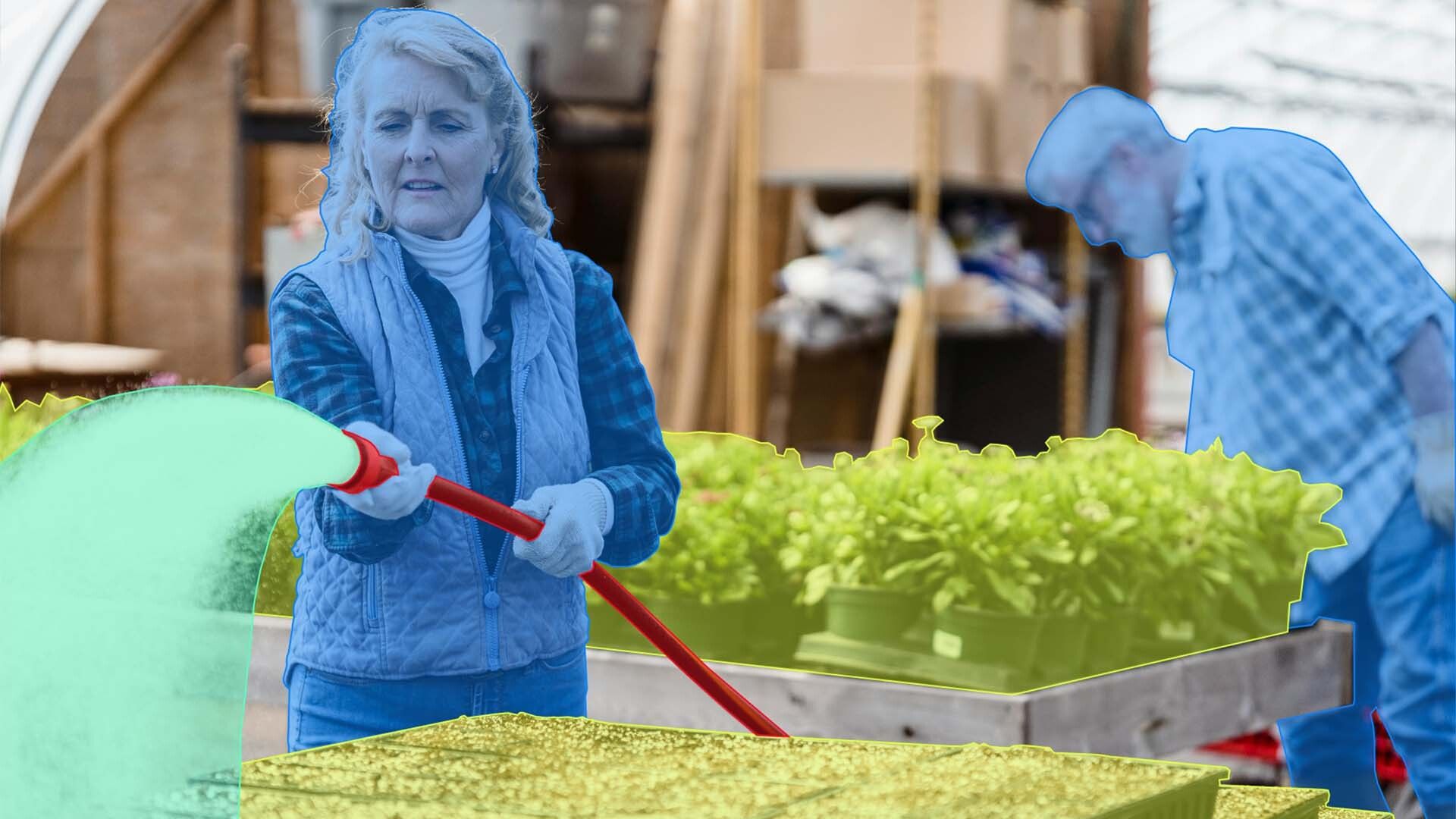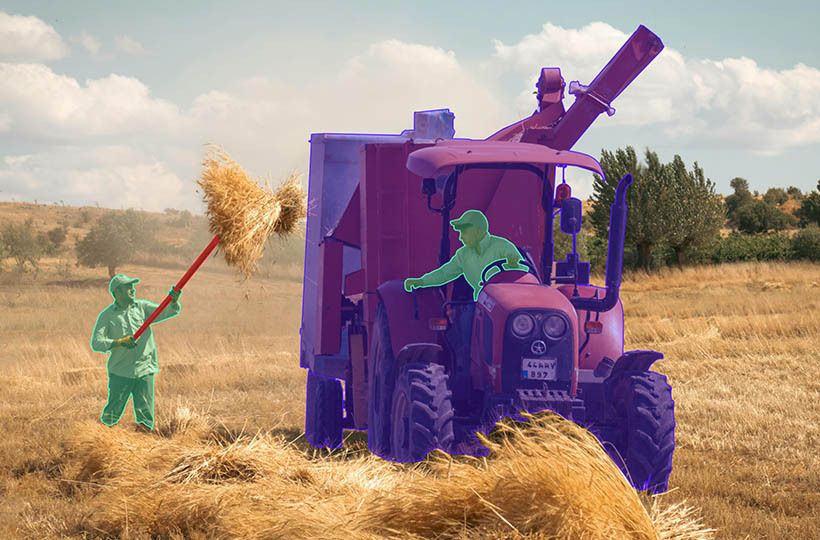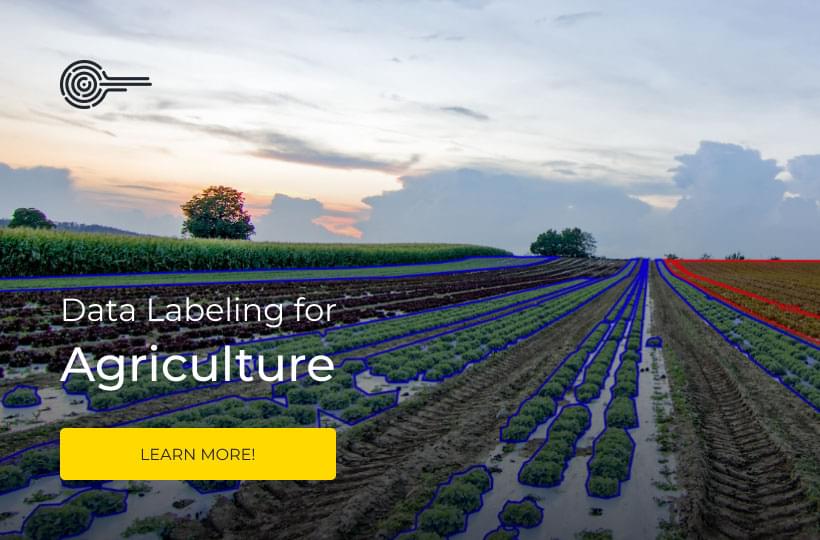Precision Irrigation: How AI Can Optimize Water Usage in Agriculture

Agriculture consumes a staggering 69% of global freshwater, highlighting the critical need for smarter water management. AI-driven precision agriculture is transforming how we utilize water in farming. This approach is pivotal in addressing the pressing issue of water scarcity.
The impact of AI on farming is profound. In Australia, the COALA project achieved a 20% increase in irrigation efficiency. This advancement not only conserves water but also enhances crop yields by 20 to 30%. It's a significant win for both farmers and the environment.
Smart irrigation systems are central to this agricultural transformation. These AI-powered systems gather real-time data on soil moisture and weather patterns. They use this information to predict crop water needs accurately, reducing water usage by up to 25%.
Moreover, these systems monitor plant health, detecting diseases and pests early. This approach minimizes the use of chemical treatments and ensures healthier crops. Additionally, it reduces the need for human monitoring, leading to substantial cost savings for farmers.
Key Takeaways
- AI-driven precision agriculture can cut water usage by up to 25%
- Smart irrigation systems boost crop yields by 20-30%
- Real-time data collection optimizes water distribution
- AI technology reduces the need for chemical treatments
- Automated systems lead to long-term cost savings for farmers
- Precision irrigation addresses global water scarcity challenges

The Global Challenge of Water Scarcity in Agriculture
Water scarcity threatens agriculture globally. Climate change and population growth increase the demand for water in farming. This situation demands innovative water scarcity solutions with ML and efficient use of farm resources.
Understanding the Water Crisis in Farming
Agriculture uses a lot of the world's water. Four billion people face water scarcity for at least a month annually. Farmers must now produce more food with less water, emphasizing the need for efficient farming practices.
Impact of Climate Change on Agricultural Water Resources
Climate change worsens water scarcity in farming. It affects 7% of the global population monthly. The water needed for global food production makes up 10% of total water use. These facts highlight the need for adaptive farming strategies.
The Need for Innovative Water Management Solutions
Farmers must adopt advanced water management solutions like ML. Precision irrigation and modern technologies can greatly reduce water waste. Essential strategies include better irrigation systems, water storage, and regenerative farming for sustainable agriculture.
"Water is the driving force of all nature." - Leonardo da Vinci
Using ML to optimize farm resources can lead to a more water-efficient and sustainable agricultural future.
Introduction to AI-Driven Precision Agriculture
AI-driven precision agriculture is transforming farming. It leverages advanced technologies to optimize resource use and enhance crop yields. By employing AI for irrigation management and optimizing farm resources, farmers can make informed decisions. These decisions lead to sustainable and efficient farming practices.
The use of precision agriculture is expanding swiftly. GPS technology, now prevalent on 27% of U.S. farms, facilitates precise field mapping and tracks equipment. IoT devices offer real-time environmental monitoring. Sensors gather detailed data on soil conditions, weather, and crop health.
AI algorithms process this vast data to guide farmers in making precise decisions. These decisions relate to water usage, fertilizer application, and pest control. This targeted approach cuts down waste and elevates farm productivity.
| Benefit | Potential Impact |
|---|---|
| Yield Increase | 10-15% |
| Production Cost Reduction | 10-20% |
| Global Agriculture Growth | $500 billion to $1.5 trillion annually by 2030 |
AI-driven precision agriculture's effects reach beyond individual farms. It has the potential to overhaul the agricultural sector, fostering sustainability and tackling global food security issues. As these technologies become more widespread, small-scale farmers gain better access to information, markets, and financial resources.
Smart Irrigation Systems: The Core of Precision Irrigation
Smart irrigation systems are transforming how we manage water in agriculture. They leverage AI for irrigation management and ML for water scarcity solutions. This technology allows farmers to apply water precisely, reducing waste and enhancing efficiency.
Components of AI-powered irrigation systems
AI-powered irrigation systems have several critical components:
- Soil moisture sensors
- Weather stations
- Data processing units
- Automated irrigation controls
These elements combine to form a comprehensive smart irrigation system. They optimize water usage effectively.
Real-time data collection and analysis
Smart irrigation systems gather and analyze data in real-time. Soil moisture sensors and weather stations provide insights into field conditions. Machine learning algorithms then process this data, offering immediate insights for irrigation decisions.
Automated decision-making for optimal water distribution
AI enables these systems to automate decisions on water distribution. They consider soil moisture, weather forecasts, and crop growth patterns for optimal watering schedules. This precision can result in substantial water savings and enhanced crop yields.
| Benefit | Impact |
|---|---|
| Water Savings | 20-72% reduction in irrigation use |
| Cost Reduction | Decrease in operational costs |
| Crop Yield | Improved plant health and productivity |
| Energy Efficiency | Optimized energy consumption |
Predictive Analytics and Crop Modeling for Water Optimization
Predictive analytics and crop modeling are transforming water management in agriculture. These technologies leverage AI for irrigation management, leading to notable improvements in resource optimization for farms. By combining historical data, weather forecasts, and crop details, AI models predict crop water requirements with high precision.
AI-powered irrigation systems can cut water usage by up to 25%. This is essential for tackling water scarcity in agriculture. For example, a study in Uttar Pradesh showed precision irrigation in pea farming led to significant water savings and higher yields than traditional methods.
The fieldWISE platform, powered by AI and machine learning, has pinpointed over 100,000 hectares of fields with soil moisture stress. This insight has aided 4,540 farmers in optimizing their water use. Such innovations are crucial for meeting the increasing food demand while preserving water resources.
| Technology | Benefits | Challenges |
|---|---|---|
| AI-driven irrigation systems | 25% reduction in water usage | High initial investment |
| Soil moisture sensors | Real-time data for precise water requirements | Technical knowledge required |
| Machine learning models | Optimized water scheduling | Data privacy concerns |
Despite these strides, small-scale farms struggle with AI adoption. They face hurdles such as high initial costs, lack of technical expertise, and data privacy worries. To overcome these hurdles, innovations like industry 5.0 and explainable AI are being developed. These aim to enhance the accuracy and transparency of machine learning models in smart irrigation systems.

Remote Sensing Technologies in Precision Irrigation
Remote sensing is key in modern precision agriculture, offering innovative solutions to water scarcity with ML and AI for irrigation management. These technologies have transformed farming, enabling farmers to use water more efficiently and increase crop yields.
Satellite Imagery for Large-Scale Water Management
Satellite technology gives farmers a bird's-eye view of their fields. High-resolution images cover vast areas, pinpointing irrigation needs on large farms. Precision farming utilizes this data to map soil moisture and crop health precisely, guiding water distribution.
Drone-Based Monitoring for Detailed Crop Assessment
Drones provide a detailed look at the field. They fly low, capturing images with a resolution under 5 meters. This detail is ideal for spotting issues like pests or water stress that satellites might overlook.
AI Algorithms for Interpreting Remote Sensing Data
The real strength of remote sensing is in interpreting data. AI algorithms process vast spectral data from satellites and drones, converting it into actionable insights for farmers. These systems predict crop water needs, detect disease early, and optimize irrigation schedules.
| Technology | Resolution | Key Benefits |
|---|---|---|
| Satellites | >5m | Large-scale monitoring, daily coverage |
| Drones (UAVs) | Detailed crop assessment, flexible deployment | |
| AI Algorithms | N/A | Data interpretation, predictive analytics |
By integrating these technologies, farmers can develop a comprehensive system for precision irrigation. This approach conserves water, boosts crop yields, and cuts operational costs. It's a win-win for agriculture and the environment.
Precision Irrigation: Tailoring Water Usage to Crop Needs
Precision irrigation is transforming how we manage water in agriculture. It ensures water is allocated based on the specific needs of each crop, addressing water scarcity and enhancing farm efficiency. By taking into account soil type, crop variety, and local weather, precision irrigation optimizes water usage.
Drip irrigation systems deliver water straight to the roots of plants, significantly reducing waste. These systems can cut down water evaporation by 15-30% when compared to traditional methods like pivot or sprinkler systems. This targeted irrigation method enables farmers to irrigate up to 30% more land with the same amount of water.
Machine learning (ML) plays a vital role in precision irrigation. AI-powered systems analyze real-time data to fine-tune irrigation schedules and water quantities. This intelligent approach ensures optimal soil conditions, preventing waterlogging and nutrient leaching.
| Irrigation Method | Water Use Efficiency | Potential Water Savings |
|---|---|---|
| Precision Irrigation | 95% | Up to 40% |
| Pivot Irrigation | 80-85% | 20-30% |
| Furrow Irrigation | 60% | 10-20% |
Optimizing resources for farms goes beyond just water conservation. Precision fertigation, which combines irrigation with fertilizer application, results in higher yields and better quality produce. This method minimizes leaching and waste, leading to substantial cost savings for farmers.
AI-Powered Leak Detection and Water Efficiency Improvements
AI is transforming irrigation management on farms, enabling the quick detection and prevention of water losses. Smart systems analyze irrigation setups to identify inefficiencies, helping farmers conserve water. By leveraging AI insights, you can refine your irrigation infrastructure and significantly cut costs.
Identifying Water Losses
AI-powered leak detection tools swiftly identify areas of water loss in irrigation systems. These technologies scrutinize flow patterns and pressure sensor data to pinpoint leaks accurately. By adopting these tools, you can slash water waste by 20 to 60% compared to traditional methods.
Optimizing Infrastructure
AI enhances farm resource optimization beyond leak detection. It combines data from sensors like vibration, acoustics, temperature, and flow rate to forecast equipment failures. This predictive maintenance strategy reduces downtime and optimizes maintenance schedules, ensuring your irrigation system runs efficiently.
Cost Savings Through Efficiency
Enhanced water efficiency directly correlates with cost savings. AI-optimized precision irrigation controllers have been proven to reduce water use by over 40%. AI-driven low-pressure drip emitters can decrease pumping energy by more than 50%. These efficiencies not only conserve water but also lower operational costs, enhancing your farm's profitability and sustainability.
| AI Application | Efficiency Improvement |
|---|---|
| Leak Detection | 20-60% water savings |
| Precision Controllers | Over 40% reduced consumption |
| Low-Pressure Drip Systems | Over 50% energy savings |
Enhancing Water Sustainability with Alternative Sources
Machine learning is transforming how we manage water in agriculture. AI-driven systems now encourage the use of recycled and rainwater, cutting down on freshwater consumption. This is essential, as farming already uses about 70% of the globe's freshwater, watering only 25% of arable land.
Precision irrigation is a pivotal method for optimizing farm resources. It delivers water and nutrients in precise amounts, boosting efficiency up to 95% over traditional methods. AI also plays a crucial role by analyzing soil and crop data to suggest minimal chemical use, thus preserving soil health and preventing water pollution.
The payback period for precision irrigation systems is under 3 years, highlighting their economic viability. With the need to double global food production by 2050, these AI-powered systems are indispensable. They provide tailored irrigation plans based on soil conditions specific to each crop, avoiding excess water and scarcity while boosting productivity and yield.
AI and machine learning are pivotal in overcoming the challenge of incomplete environmental data. Techniques like Extreme Learning Machine and k-Nearest Neighbors fill in missing soil data, ensuring more precise water management decisions. This approach is vital for balancing water use and enhancing agricultural efficiency under climate change and population growth pressures.
FAQ
What is precision irrigation, and how does it relate to AI?
Precision irrigation customizes water use for specific crops, considering soil type, crop type, growth stage, and weather. AI systems analyze these factors in real-time, adjusting irrigation to meet crop needs. This method conserves water and boosts yields by ensuring optimal conditions for crops throughout their lifecycle.
How do smart irrigation systems work, and what are their components?
Smart irrigation systems employ sensors to monitor soil moisture and weather, processing this data with machine learning algorithms. These algorithms provide real-time irrigation advice. By applying water only when needed, these systems reduce waste and enhance efficiency. Key components include sensors, data processing units, and automated irrigation controls.
How can predictive analytics and crop modeling help optimize water usage?
AI-driven predictive analytics forecast crop water needs and plan irrigation more effectively. By combining historical data, weather forecasts, and crop details, AI models predict water requirements and growth stages. These insights refine irrigation schedules, adapting to environmental changes for efficient water use and better yields.
What role do remote sensing technologies play in precision irrigation?
Remote sensing technologies, like satellite imagery and drones, monitor crop health and soil moisture. AI analyzes these data to spot patterns in water use efficiency. This technology detects over-irrigation or stress, guiding targeted irrigation adjustments. It's crucial for managing water on a large scale and assessing crop health.
How can AI help detect and prevent water losses in irrigation systems?
AI is adept at spotting irrigation inefficiencies and leaks. It quickly identifies water loss areas and proposes improvements, crucial for large farms. By optimizing irrigation with AI insights, farmers save costs through better water use. This proactive maintenance approach prevents waste and extends irrigation system life.
Can AI contribute to the use of alternative water sources in agriculture?
Yes, AI promotes sustainable water use by efficiently managing alternative sources like recycled and rainwater in farming. It reduces freshwater dependence. AI also suggests minimal chemical inputs based on soil and crop data, preserving soil health and preventing water pollution.




